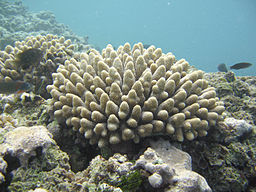By Martina M. Dewey
 A paleoclimatologist’s work is science focused on the climate of past ages. Proxy data is data that paleoclimatologists gather from natural recorders of climate variability, e.g., tree rings, ice cores, fossil pollen, ocean sediments, coral and historical data. By analyzing records taken from these and other proxy sources, scientists can extend our understanding of climate far beyond the 140-year instrumental record.
A paleoclimatologist’s work is science focused on the climate of past ages. Proxy data is data that paleoclimatologists gather from natural recorders of climate variability, e.g., tree rings, ice cores, fossil pollen, ocean sediments, coral and historical data. By analyzing records taken from these and other proxy sources, scientists can extend our understanding of climate far beyond the 140-year instrumental record.
Widely Used Paleo Proxy Data
Historical Data: Historical documents contain a treasure of information about the climates of the past. Observations of weather and climate conditions can be found in places such as farmers and ships logs and newspaper accounts. Other written records may contain information, that when properly evaluated, can both provide qualitative and quantitative data about past climates.
Corals: Corals build their hard skeletons from calcium carbonate—a mineral extracted from sea water. The carbon contains isotopes and trace metals that can be used to tell the conditions of the water in which coral grows, such as temperature. The use of temperature recordings can be vital in the reconstruction of the conditions in which the coral lived.
For more information on coral visit: http://www.ncdc.noaa.gov/paleo/outreach/coral/
Fossil Pollen: All plants that flower produce pollen. The pollen grains that each plant produces can be used to identify the type of plant from which it came. This is deduced from the unique shape of the grain. Pollen grains become preserved in sediments over time, usually in the bottom of lakes, oceans or ponds. When scientists analyze the pollen grains they are able to tell what types of plants were growing at a specific time. Conclusions can then be made about the climate due to the types of plants found within each layer.
More information on fossil pollen can be found at the United States Geological Survey website. Their homepage is: http://www.usgs.gov/
They also specifically have a page dedicated to fossil pollen titled “Fossil Groups- Spores and Pollens” that can be located at http://geology.er.usgs.gov/paleo/sporepollen.shtml
Tree Rings: The growth of a tree is influenced significantly by climate. Tree ring widths, density of the trees, and isotopic composition are a reflection on the climate a tree is in. For example in a balmy climate a tree usually produces only one ring a year thus providing a record of climatic conditions each given year. Trees can grow to be hundreds or even thousands of years old and hold records of climate for centuries to millennia.
The University of Arizona has a Laboratory for Tree Ring research. You can access their website here: http://www.ltrr.arizona.edu/
The Ultimate Tree Ring Webpage for the University of Tennessee can be found at: http://web.utk.edu/~grissino/ . The webpage, compiled by Henri D. Grissino-Mayer of the University of Tennessee at Knoxville, focuses on the science of Dendochronology (carbon dating of remains).
Ice Cores: Ice is located in polar ice caps and high in mountains and has accumulated due to snowfall over many millions of years. Climatologists dig through the ice with drills to collect ice cores. These cores contain many things such as dust, air bubbles and oxygen isotopes. Expert scan use what they have collected to determine the past climate of an area
Ocean and Lake Sediments: There are billions of tons of sediments that gather in lakes and oceans each and every year. Scientists and experts drill cores of sediment from the basin floors. The sediment on the floors of lakes and oceans contain tiny fossils as well as chemicals that are used to explain past climates.
For information on ocean drilling please visit the website of ODP at Texas A & M University in College Station, Texas at:. http://www-odp.tamu.edu/

Comments are closed.